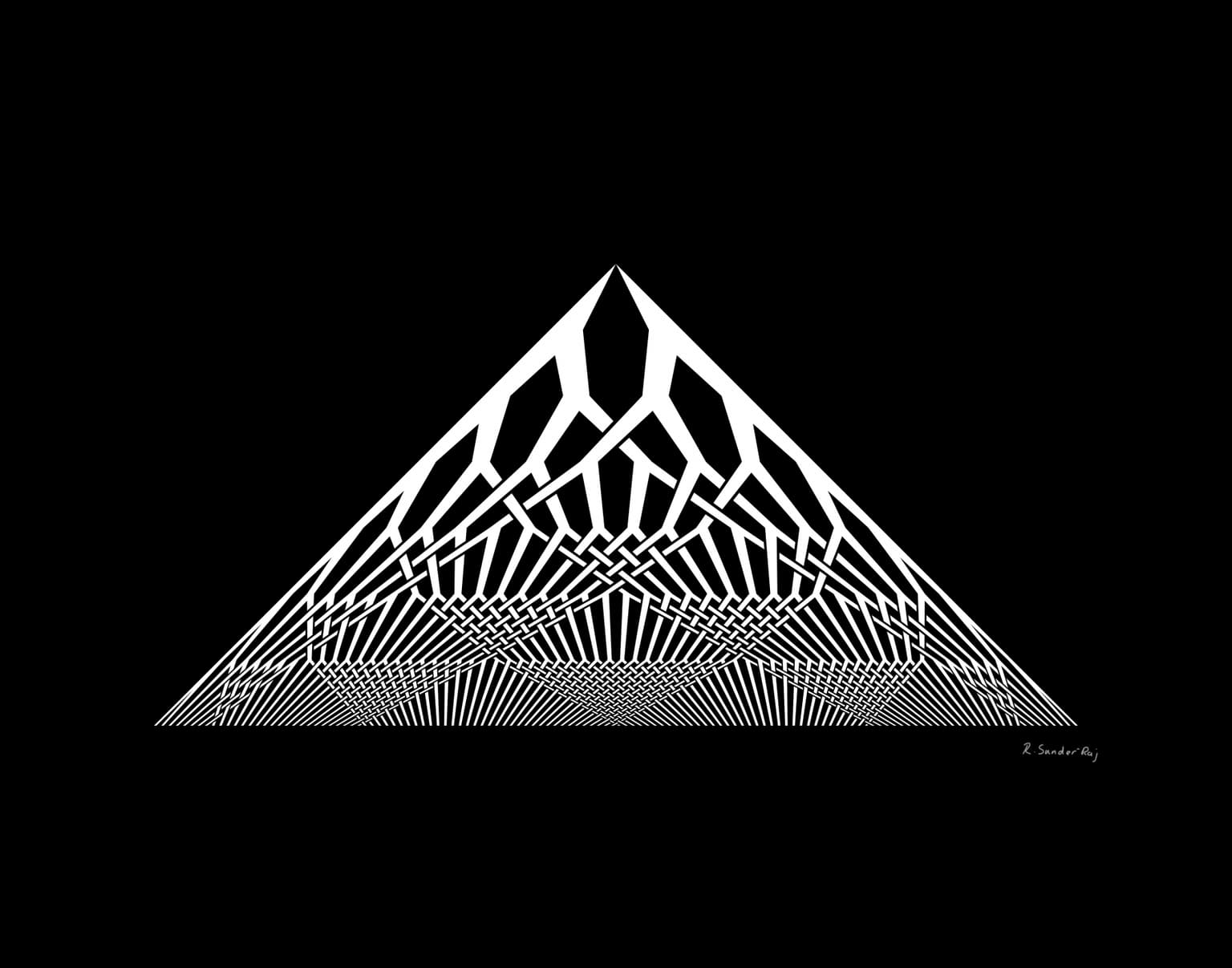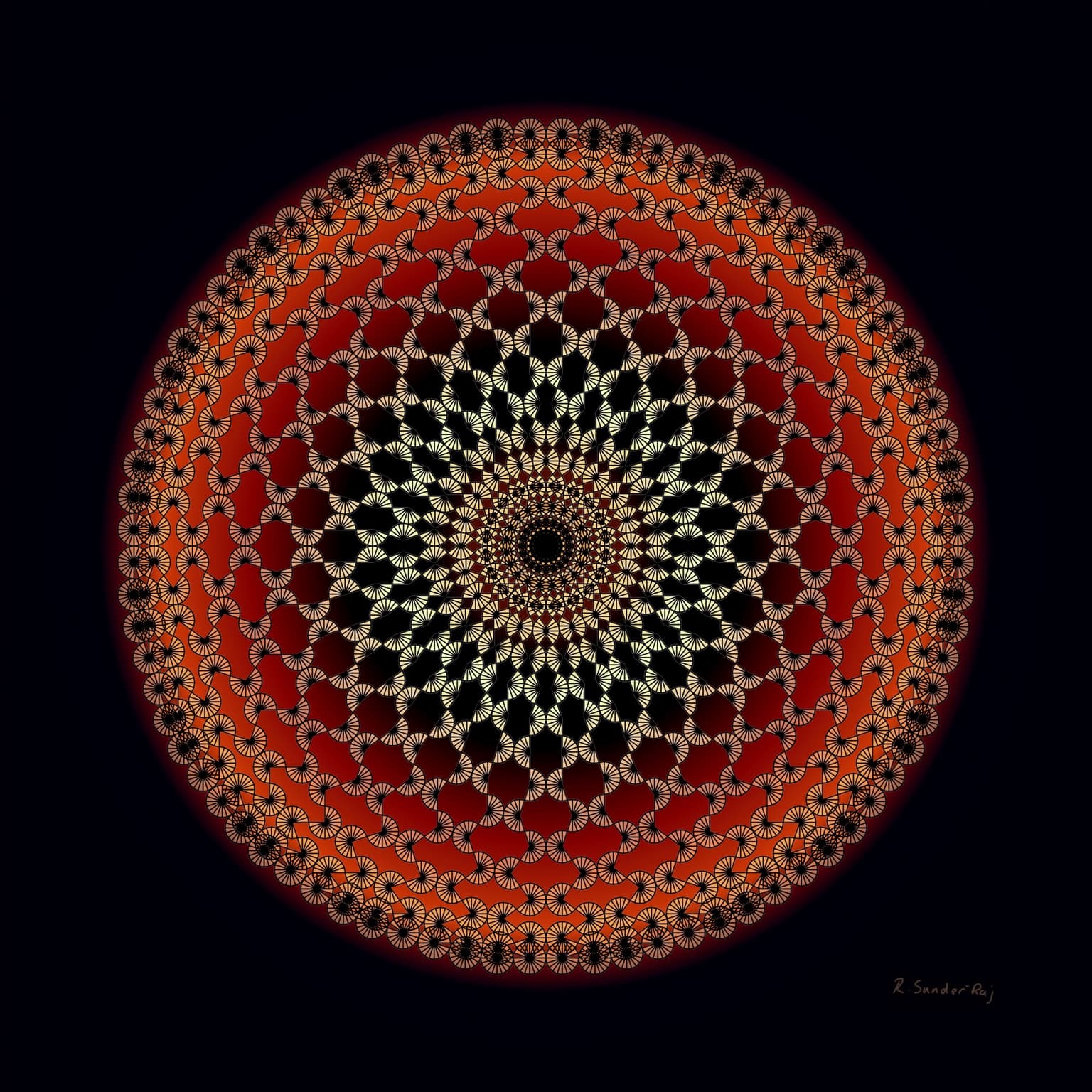2023 Joint Mathematics Meetings
Rashmi Sunder-Raj
Artists
Rashmi Sunder-Raj
Mathematical Artist
Waterloo, Ontario, Canada
Statement
I seek patterns to make sense of my world. Some of these I choose to interpret as visual images. Sometimes this involves tessellations, sometimes crochet...and sometimes other things.
Artworks

This image depicts the first few rows of Pascal’s Triangle seen as a binary tree with interwoven branches. It was made by separating each entry into a sum of ones and allowing the branches to show paths taken by the ones in moving from row to row.
It was used as the representative image in a video (shown at The Bridges Conference Short Film Festival in 2019) which explored the idea of tracing the how the entries in the triangle are formed.

This is a pattern with 20-fold rotational symmetry using 40 copies of a unit that I refer to as a ‘wedge squiggle’ (where an isosceles triangle, a sequence and switching directions are used to construct a compound shape with interesting properties, see https://twitter.com/i/moments/1050938075222855680).
In this case, the angle of each wedge is 18° (2π/20) and as a consequence, the shape obtained by the sequence of 1,2,3...20 wedges mostly fits within a triangle whose least angle is 9° (2π/40) (with a few bits sticking out). So 40 of them can fit together tightly if we allow a little bit of overlap near the center.